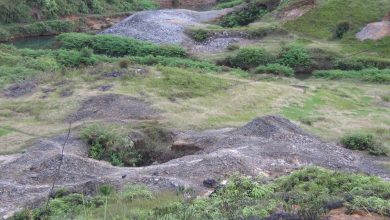CS for assessing loss of water like transmission & distribution loss of power sector

Shillong, Feb 10: Chief Secretary DP Wahlang advocated the need of assessing transmission and distribution (T& D) losses when water is disbursed to various localities like in the case of power sector which focuses on T & D losses.
Addressing the gathering on the concluding day of International Water Conclave held here on Saturday, the Chief Secretary said only 65 per cent of water pumped from Mawphlang is reaching due to the leakage of pipes.
He also highlighted the paradox as Meghalaya has the cleanest village in Asia but two of the most polluted rivers are right here in town which we are battling time and again. “Yesterday, when we had the cabinet meeting quite a few key decisions were taken to ensure that we turn them around.
Speaking of water source management, he said, “We need to rejuvenate, resuscitate the various sources of water. People are saying that the government doesn’t have money, it’s not true. In fact, for source regeneration, we have a lot of money.”
Stating that water issues should be included in the syllabus by the education department, the chief secretary said, “We tend to forget about water conservation and waste management. This is very important because it is through education department that students are taught where should waste water go.”
The International Water Conclave concluded with the official release of the Shillong Declaration by the chief secretary in the presence of Shakil P. Ahammed, Additional Chief Secretary, and Joram Beda Commissioner & Secretary, among others.
The highlight of the event was the Shillong Declaration which emphasised the imperative need for embracing state-of-the-art technology in sanitation, waste, and wastewater treatment, alongside promoting water recycling initiatives to bolster water availability. The declaration also stressed the importance of participatory planning, implementation, and oversight in ensuring safe, sustainable, and resilient water management and governance systems, crucial for meeting diverse water needs across hill regions.
During the course of the conclave, participants engaged in extensive deliberations covering a spectrum of topics including water and infrastructure development, climate resilience, disaster management, spring shed development, and best practices in water conservation. The discussions culminated in identifying actionable pathways for addressing water challenges in hill regions.
The event marked a significant step forward in fostering collaborative efforts towards addressing water-related issues, ensuring the holistic development of hill regions, and promoting sustainable water management practices. The insights gained from the conclave are poised to guide future actions and policies aimed at safeguarding water resources and enhancing the well-being of communities in the region.





